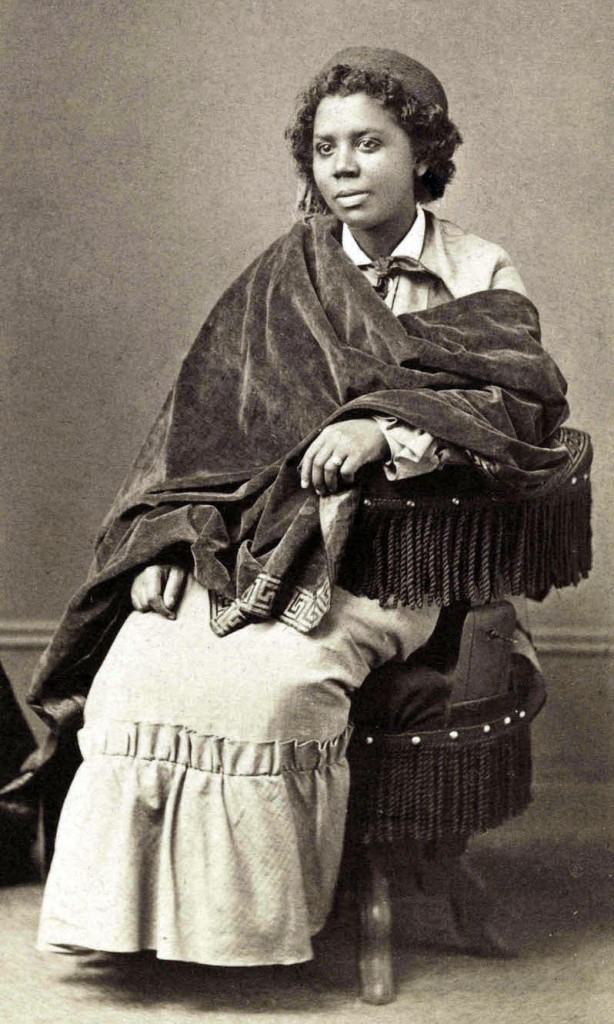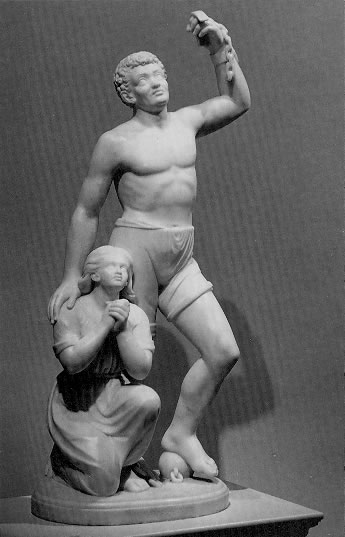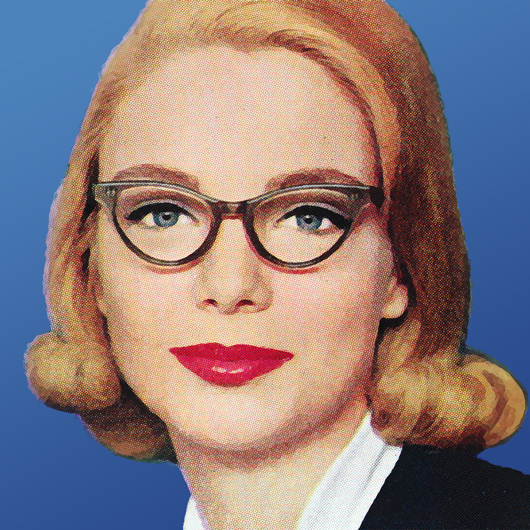
Edmonia Lewis (c. 1844 – sometime after 1909) came from a penniless family, was orphaned at nine, was African American and Native American, and stood only four feet tall. This did not stop her from achieving international fame as a sculptor.

Lewis had an African-Haitian father and a mother who was African American and Mississauga (a branch of the Chippewa people). Her mother was a weaver. She spent her early life in New York State. When she was orphaned at the age of nine, she and her brother, Samuel, were adopted by their maternal Mississauga aunts. They lived with the tribe for several years, hunting, fishing, and making and selling baskets and other souvenirs to Niagara Falls tourists.
Samuel made his fortune in the California Gold Rush and used some of his proceeds to send Lewis to the ladies preparatory school at Oberlin College. In 1862, she was accused of poisoning her fellow students. When she was not arrested immediately, townspeople kidnapped her in the night, dragged to a field, beat her, and left her for dead. They never faced any legal action. Lewis had to stand trial for the alleged poisoning. She was acquitted, but expelled the following year after being falsely accused of stealing art supplies.
Lewis moved to Boston, where three male sculptors refused to work with her before she convinced Edward A. Brackett to be her instructor. His work was popular with abolitionists, so Lewis’ early subjects were abolitionists and Northern Civil War heroes. She sold 100 busts of Robert Gould Shaw, the Union commander of the 54th Massachusetts Infantry Regiment (a regiment made of African Americans).

In 1865, Lewis moved to Rome, where she became part of a group of expatriate female artists that Henry James called “that strange sisterhood of American lady sculptors.”
This group included sculptor Harriet Hosmer, actress Charlotte Cushman, and Cushman’s partner, sculptor Emmma Stebbins. Despite her small size, Lewis refused to hire assistants and did even the most physically demanding parts of sculpting herself.
Many of her pieces, such as “The Freed Woman and her Child” and “Forever Free” tackled the subject of slavery.
Others, such as “The Old Arrow Maker”, portrayed Native Americans as dignified in a way that most art of the time did not. She also made several different pieces about Hagar, a biblical woman with whom Lewis identified.

Edmonia Lewis never married or had children, and not much is known about her personal life. She often dressed like a man, and most of her friends and female mentors were openly and, in fact, famously lesbian (including Hosman, Cushman, and Stebbins). Because of this, many historians have concluded that Lewis was also lesbian, although it’s something we will probably never know for sure.
What does seem certain is that Lewis was sympathetic to women who romantically loved other women, and that she was devoted to securing her own independence and freedom to live, dress, and create in whatever style she wished.
In 1873, Lewis displayed “Death of Cleopatra” at the Philadelphia Centennial Exposition. It attracted controversy and added to her fame.
After that exposition, the neoclassical style favored by Lewis fell out of style, replaced by Romanticism and use of bronze instead of marble. Lewis fell out of public view and is last mentioned in print in 1909. Her date of death and cause of death is unknown.

You can find more information about Lewis at:
Hutchins Center for African and African American Research
Edmonia Lewis: Wildfire in Marble, by Rinna Evelyn Wolfe ( A )


This is FASCINATING – thank you so much for sharing! I would loooove to read a novel about her – and now I’m going to go order that biography you linked to!
I notice the captions under the two photos of Lewis’ sculptures are labeled as sculpted by “Edmond”, rather than “Edmonia”, Lewis??
OOPS! Thanks for telling me! Fixing! *shakes fist at autocorrect*
So cool!
You may enjoy our tale of how Edmonia Lewis sculpted Henry Wadsworth Longfellow in Rome. It’s free on our website: http://www.edmonialewis.com
This is amazing! I can’t believe I didn’t know about her. P.S. that bust does look quite a bit like Matthew Broderick.
[…] Strong Female is Edmonia Lewis (b. 4 July 1944 – d. sometime after 1909 […]